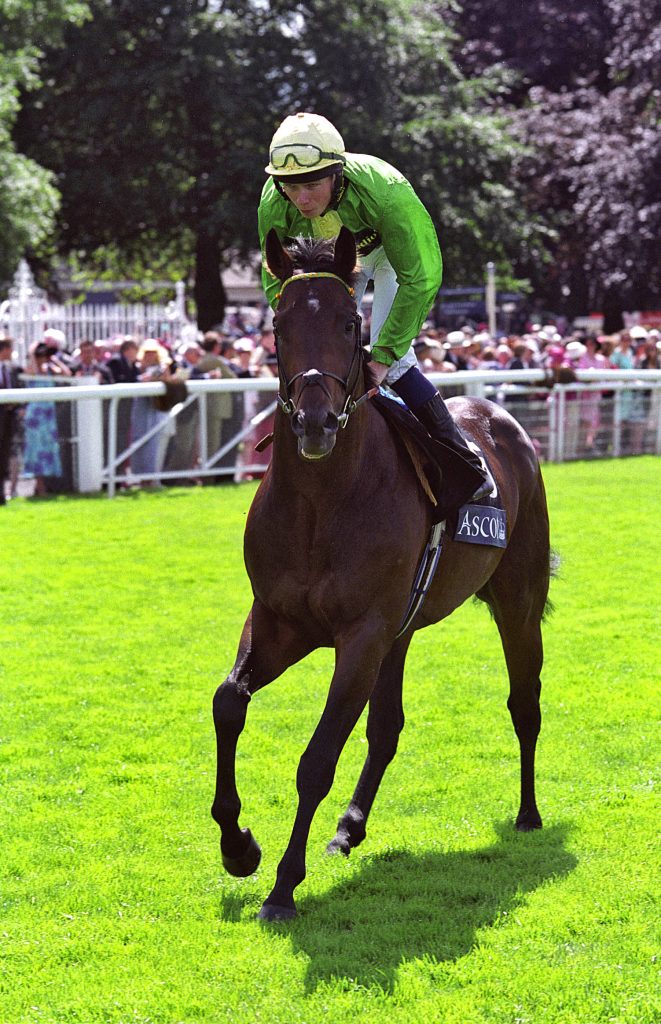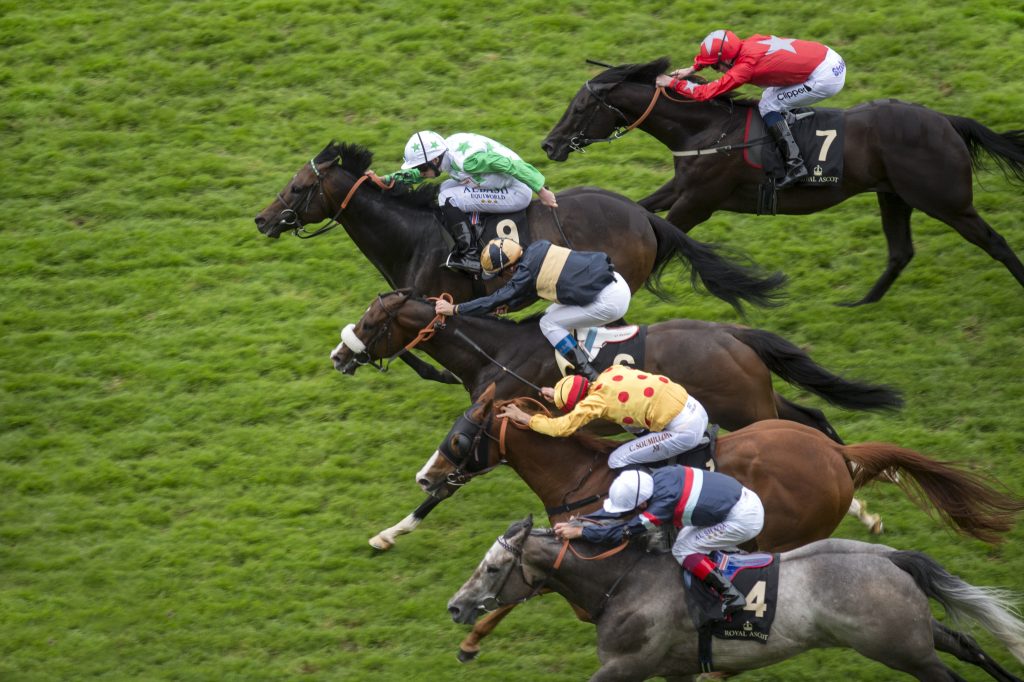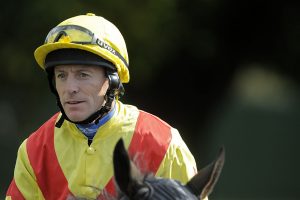In the 1980s, Master Willie and Time Charter were two top-notch middle-distance performers for your stable. Now you are better known for your handling of sprinters, exemplified by current stars Limato and Twilight Son. What prompted the change of emphasis?
It just happened. In those days most of the good horses were homebreds and now there are fewer and fewer people breeding their own, so we had to go to the sales much more. The cheaper horses at the sales are the sprinters. Well-bred middle-distance horses cost an absolute fortune and I just wasn’t in a position to be spending that sort of money.
It wasn’t a voluntary choice, just the way things went. We have a few syndicates and plenty of partnerships, which have played a big part in replacing the owner-breeder and they provide a lot of fun for a lot of people.
There must be a very different training schedule for stayers and sprinters. Which do you enjoy training most, and why?
In the old days middle-distance horses used to be worked over a mile and a quarter, maybe even a mile and a half. Now with the modern trend nothing works much more than seven furlongs. Obviously the sprinters wouldn’t work more than five furlongs, often less. But there isn’t the huge difference there used to be.
The change in training those middle-distance horses dawned on me when Martin Pipe won the Grand National with Miinnehoma, largely off a five-furlong all-weather gallop. Suddenly it made you realise as long as the horse was fit, the rest was down to nature.
That might be a slight exaggeration, but not much. Basically, a horse is bred to get a distance, the genes will decide what distance it is going to stay and, as long as you can produce it fit, you’ve done the job. I have absolutely no preference over handling middle-distance horses or sprinters; anything that can give you a little bit of excitement and can get its head in front.
You have been quoted as saying: “I do love buying horses for nothing.” What is the key to finding bargains – such as Airwave (12,000gns) and Amour Propre (1,500gns) – at the sales and do you fancy buying at the top end, such as Tattersalls Book 1?
There is an awful lot of luck involved. Amour Propre was a funny little horse with slightly crooked legs. Corrybrough, who is from the same family, had just won a maiden for me at Windsor by three lengths and looked like being a black-type horse, which he duly was and swayed me towards Amour Propre. That was ‘insider-trading’, if you like!
There is an awful lot of luck involved in buying horses. I probably take chances that others wouldn’t
Airwave was by Air Express who was an unfashionable sire. I think it is largely luck and it’s probably taking a chance on animals which people with a lot more money and freedom of choice would not take a chance with.
I think it would be tremendous fun and very exciting to be buying in the top league, but I’d be wanting to do it for somebody who really had so much money they would not be overly concerned, otherwise it would be huge pressure. But it’s not going to happen.
Which horse has given you the most pleasure to train, and why?
Time Charter, who was a funny little thing by an unfashionable sire and the family hadn’t really got going when she came in. She showed an awful lot of speed from the start over five furlongs. She was hugely progressive all the way through and as tough as nails with that spark of brilliance, which you don’t often come across in a small yard like ours.
She could quicken up and leave the others for dead. I suppose the fact that she was so unfashionably bred, a tremendous character, very tough mentally and physically, and went on for years made her such a pleasure to train.
You took over from your father, Derrick in 1973. You have followed in his successful footsteps with all the trademarks of the traditional English trainer. What were the biggest lessons you learned from your father?
Trying to cover all aspects of training as properly and thoroughly as you could, especially where stable management is concerned. Though I have to say that’s changed dramatically since my father was training, particularly in the way we now rovide ventilation in the stables for the modern racehorse.
In my father’s day everything was shut up and when you went in to muck out in the morning you could hardly breathe for the smell. Nowadays horses seem to need every tiny bit of ventilation they can get.
My father was always very patient, letting the horses come along in their own time and not forcing them, and that certainly rubbed off on me. I was seven or eight years as his assistant following stints with Tommy Smith in Sydney and Mick Bartholomew in Chantilly. Tommy Smith was a very, very hard man and got through horses at a great rate. He trained them hard. Mick, a second-generation Frenchman, was very much an English type of trainer. They both provided a good grounding for me.

Candy trained Kyllachy to win the Group 1 Nunthorpe Stakes at York in 2002
Can you recall the outstanding racing memory of your youth?
It was when I was with Mick Bartholomew in France; he had a runner at the Epsom Derby meeting and I flew over with it. And we just happened to have Sea-Bird (trained by Etienne Pollet) with us on the plane, which was an amazingly rickety old Bristol Freighter with the rivets falling out. You could actually look through the rivet holes and see daylight outside. It was a pretty unusual way of travelling, to say the least!
The French lads hadn’t had much experience of England so I tried to make sure the trip went as well as possible for them. But it didn’t start very smoothly as our horse became unruly on take-off. We found ourselves doing a circuit and landing quickly again before we could calm him down, and then taking off a second time. That was quite an experience on its own. But to be at Epsom to witness Sea-Bird’s Derby was something I’ll never forget. His victory was one of the most amazing things I have seen. He made it look so easy.
The 1990s were a lean period for the Candy stable. Did you ever feel like quitting and doing something else – or going back to farming?
I never gave a thought to the possibility of packing up. I’m far too obstinate! Various horses kept us going; Always Friendly was pretty good, Eveningperformance was a brilliant sprinter, Crystal Hearted earned a run in the Derby, and Gorse was below everybody’s radar because he did most of his winning in France, Germany and Ireland, and they were Group races.
We may not have had the numbers and it was a struggle at times. I used to farm but don’t do it myself any more because the place isn’t big enough to warrant the purchase of modern machinery, so it is now done under contract.
To be at Epsom for Sea-Bird’s Derby was something I’ll never forget. He made it look so easy
You must have been delighted with Twilight Son’s victory in the Diamond Jubilee Stakes at Royal Ascot…
Yes, it was a great result as earlier in the season our horses had been getting to the furlong-pole and not going any further. Twilight Son is as tough as old boots and it was certainly an exciting race. All being well, he will go for the July Cup at Newmarket. Limato, who missed Royal Ascot, could go for the July Cup or the Summer Mile at Ascot, depending on the ground.
Now in your fifth decade of training, what has struck you as the most significant change in the thoroughbred during that time?
They are frighteningly less robust and unable to stand the work that they would have been asked to do 30 years ago, never mind 50 years ago. Their legs and feet are nothing like as strong as they used to be; also they are much more prone to wind problems and any kind of disease. They are far harder to keep sound.
There is absolutely no way horses can stand the roadwork they used to do in winter and the distances they worked in summer during the time when my father was training. Nowadays many of the mares are just not up to scratch.
People see the headlines of the yearling sales results, only a tiny percentage of which make a profit. But the figures look very exciting and prospective breeders with a mare think ‘Let’s give it a go, get her in foal, sell it, get her in foal, sell it’, and so on. As I’ve said, the modern trend is for far less owner-breeding with far more emphasis on the sales and generally the mares are not good enough.
You are famously pessimistic about your runners. Why? Are you still ambitious?
I don’t believe I am pessimistic, I think I am realistic. I probably come across as extremely pessimistic. Tim Forster was assistant to my father just before I was and he was probably the most pessimistic man in the world. Maybe I learnt a bit from him. You don’t want to raise owners’ hopes too much, though of course we all have expectations. I am still fiercely ambitious and a good horse will always get me excited.
Is the expansion of all-weather racing good for the sport? Does the expanding, and at times, lopsided fixture list need re-planning, and how can it be improved?
It is tremendously useful that you can go on racing through the winter and therefore educate horses who haven’t got themselves ready in time to run on the grass. Also it’s of great benefit for a lot of Flat jockeys who don’t get smart jobs abroad in winter, so now they can continue feeding their wives and families through the winter, rather than having to find a job abroad.
The all-weather provides plenty of opportunities. An awful lot of fillies can now win the most appalling races on very kind all-weather surfaces, whereas there is no way they could have won a race on summer ground against better opposition on the turf. I remember Noel Murless saying when the watering of racecourses was mooted: ‘There’ll have to be another breed.’ His view was that if they couldn’t race on un-interfered summer ground then they weren’t worth persevering with. So what he’d have said when half a dozen all-weather tracks were introduced I shudder to think.
Unfortunately, the powers that be have granted the racecourses the right to choose pretty much when they race. And there is nothing the BHA can do to alter that fact, as I understand it. You can only hope there will be more co-operation from the racecourses to work with Race Planning, who seem to get blamed for an awful lot of things over which they have no control. But it is crazy when on Fridays and Saturdays you have six meetings because you do struggle to find jockeys to ride your horses.
Also, from the point of view of running the yard, if you have horses going off in four or five different directions you’re left with virtually nobody at home. It would be much better if we could have the races spread more evenly through the week, though I do understand the weekends are when the public can go racing.

Twilight Son sticks his neck out to edge a tight finish to the Diamond Jubilee Stakes at Royal Ascot in June
You were nearly 40 years without an all-weather gallop but had one put in two years ago. Has it proved a boon?
It has been a huge help. When we were using the grass during very wet spells it was a full- time job putting it back, taking six or seven hours’ manual labour. Now, having the carpet gallop, it takes ten minutes to run a roller up and down.
The surface, made up of chopped up carpet, is becoming very popular and a lot of people have been to look at ours. It is a fraction of the cost of any other all-weather, with the possible exception of woodchip, and a far better surface than woodchip. It is the lowest cost and the lowest maintenance of all-weathers.
Has training and stable management, with the ever-increasing load of paperwork, changed a great deal in your 43 years with a licence? If so, how have you adapted?
Obviously it has with the enormous amount of paperwork involved. Forty or 50 years ago you just got a licence and got on with it, but there are so many more rules and regulations now. My father had a secretary who did a few hours in the morning and that was it; now we have a long-suffering secretary who is very full-time indeed. In the old days we had a head lad who rode out every single lot as well as carrying out the head lad duties.
Now our head lad never rides out; he is full-time with the vets and involved with all the paperwork because there has to be a record kept of absolutely everything. If one had 300 horses, staff in the stables would have increased sixfold compared to what we have here with only 60 horses. You just have to employ more people to do what is necessary.



